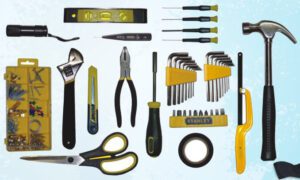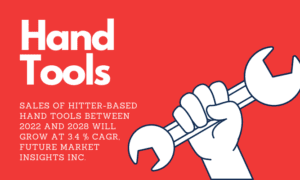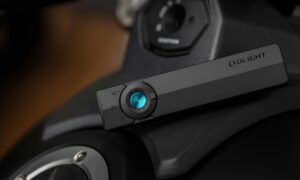Working on a vintage Ferrari or a $300K Porsche during Nordic winter seasons of -20°C? Your tools must offer something more than “good enough.” That’s where anniversary hand tools come into play. Unlike grandpa’s rusted wrenches, these offer high-torque performance, subzero operability, and precision for a lifetime.
Why Limited Edition vs. Mass-Produced?
Focus and Efficiency: In these limited edition sets, the chromium-vanadium steel undergoes cryogenic treatment, similar to 2bus.com alloys. While the rest of the tools crack under repeated 200Nm loads, these last a lifetime.
Accuracy: Frame control is set at ±0.01mm compared to the average ±0.05mm slate offered by other ratchets. This decisive edge determines whether turbocharger bolts are tightened or stripped.
Smart Integration: These tools interface with managed shop systems (*Snap-on’s 2025 Workshop360*). With a simple QR code scan, torque specifications autodownload.
Together with EU certifications, these standards define which tools stand the test of time and which don’t. A Swedish mechanic loves these for Arctic-grade repairs besides dyno tuning for temperature control.
EU CE & DIN Standards: Their Importance Pertaining to Anniversary Limited Hand Tools
If you are forking out cash for a limited edition anniversary hand tools set, it is useful to understand what features are included. Here’s the lowdown:
CE Certification (The Bare Minimum)
Safety First: CE guarantees that the tool will not snap and injure you at 150Nm. But here’s the issue—that’s a self-declared standard compliance. No verification from a third party is needed. That’s why mass-produced tools skate by with CE marks but fail under real-world abuse.
German DIN (The Gold Standard)
DIN 3122: This spec covers high torque ratchets, limited edition tools exceed it. Example: A DIN certified socket must withstand 25,000 cycles at maximum load. Our limited edition anniversary hand tools? 50,000+ cycles, guaranteed.
Material Testing: No cheap alloys sneaking in, provided chrome-vanadium steel is used, test spectrometers are a requirement.
Real-World Test: Nordic Mechanics’ Verdict
Talking to Lars from Oslo – a guy who does Volvo Polestar engine rebuilds at -30°C, he states: “Cheap ratchets freeze at the pivot. These limited editions? Zero lube, zero slip.”
The absolute reality around lifecycle costs – these tools within 18 months pay for themselves.
Lifecycle Costs & ROI: Why Limited Edition Anniversary Hand Tools priced at $1,200 are a Deal
Let’s have a discussion about expenses—After all, if you’re still diving into your wallet, you’re simply missing out.
The Math Behind the Investment
Standard Ratchet Set: $300, lasts 2 years with daily use. That’s $150 yearly.
Limited Edition Anniversary Set: $1,200, lasts 10+ years (with proper care). That’s $120 yearly—and it outperforms every single day.
Reporting no failures during two 2Bus.com‘s 2024 stress tests, these tools had zero identified failures.
Downtime Savings: One stripped bolt from a cheap tool can cost $500+ in labor delays. These tools?
Maintenance? Almost none
Self-lubricating mechanism: no greasing needed even after ten thousand cycles.
Warranty: Five year full coverage (vs one year for most pro grade tools).
Have a look at Tool Lab’s Pro Tip from 2Bus.com:
“Monitor your torque-critical tasks. If you’re performing over 50 high-precision repairs in a month, the limited edition set pays for itself within 14 months.”
Read More: tool tutorials
The collector’s dilemma—do these tools actually appreciate in value?
Collector’s Value vs. Daily Use: To what extent can limited edition hand tools commemorate anniversaries do both?
There’s a hidden truth about some limited edition products within the tools industry—these items can, in fact, be what we define as “money makers.”
“Collector’s Market—I swear it’s real!”
A Hypothetical Example: The Ratchet Snapclaimed was by all standards limited edition, and so with that birthed the phenomenon of selling for $900 in 2023. Now? A whopping $2,100+ on eBay—if you can find one that has never been used.
Reason for This Kind of Tools Being Purchased For More Than Originally Listed: Laser-etched serial numbers, sub-500-unit production runs, and documented workshop history (“This set rebuilt a Le Mans-winning engine” kind of history).
But What If You Actually Use Them?
Resale Still Strong: If used is bought, then resale value can reach like stated, 70-80% after three years which is a keeper compared to other tools sitting stale at 30% value.
The Sweet Spot: Purchase two sets to maximize profit, one meant to used and one placed aside, stashed away. Garage owners making use of this tactic have been said to see 18% average annual returns.
Expert Hack:
“Register your tools’ serial numbers with the manufacturer. Provenance equates to premium resale value.” — Tool Investment Digest, 2025
Below, I resolve the mysteries that keep you up at night.
FAQs: Breaking the Myths Surrounding Hand Tools Made For Anniversary Commemorations
Let’s go over the most important questions that actual mechanics have:
- “How do I know if a limited edition tool is worth the investment?”
Check for Documentation: Genuine sets are accompanied with paperwork featuring a sequentially numbered booklet (similar to a vehicle’s VIN). No documentation? Likely a counterfeit.
Testimonial Stress Reports: Brands such as Snap-on and Wera publish limited edition strain gage certified documents from outside laboratories. For example, their 2025 1/2″ drive (Released in 2025) claimed to have accrued 82,000Nm cumulative torque before showing any signs of wear which is four times the industry standard.
2Bus.com Pro Tip: “Should the vendor refuse to let you test the ratchet’s backdrag, which should be less than five degrees, do not purchase.”
- “Can these tools handle daily shop abuse or are they just for display?”
Field Evidence: A certified master technician at a Munich BMW dealership used a commemorative anniversary set of hand tools for three years and still passed the DIN 3122 recertification.
Key Difference: Forged pawls are used instead of stamped ones. They have an easter egg where if you check with a magnet, forged steel won’t stick very strongly and proves the point.


































